I’m back to writing and today we’re talking about one of my favorite travel places: Japan. I’ve been there four times already, and I am eager for my fifth. And last month, I did a podcast episode with Brandon Presser (🎧Ep 101), who has been there over a dozen times, lived there twice, and written five guidebooks on Japan. Today’s newsletter will tell you where to go, what to do, and how to do it. We’re going to help you plan the best trip ever.
Share this post with your friends who love traveling so they can discover a fantastic Japanese experience. And if you have been to Japan, please share your thoughts with me too!
Look out for a bonus post in a few days where I’ll cover using your points for flights and hotels, as well as some ways to boost your points balances before planning your next trip.
🗾 Japan: Overview
Japan has a deeply modernized and evolved culture. It excels in transforming facets of other cultures into the best possible version with intentionality and care. For example, Japan has become an international leader in hospitality, cuisine, and leisure through the thoughtful integration of traditional and modern aspects.
The country has four major islands to explore:
-
Honshu is the main island, home to Tokyo and Kyoto.
-
Kyushu is in the south with active volcanoes and onsen culture (hot springs).
-
Shikoku is the quietest, with small villages and farming, where you can deeply immerse yourself in the culture.
-
Hokkaido is in the north and famous for skiing, but the wilderness and mountains are not to be overlooked.
“The more time you spend [in Japan], the more you realize you don’t know the destination that well. And every time I go back, there’s always a new thing to explore. There’s always a theme that needs unpacking. And it’s one of those places that’s, it’s not like in New York where you get to live there for ten years, and then you get to say you’re a New Yorker. The more time you spend, the more you’re like, wow, I’m not from here.” (Brandon Presser)
First time in Japan? Here’s a way to approach it:
Japan offers many options, so your first time might feel overwhelming. A simple framework for your trip is to think of it as a meal:
-
Appetizer: Soak in the vibe, and do some sampling while you get over the jet lag (Tokyo and Kyoto).
-
Main Course: Attend some must-see sights and experiences (Tokyo and Kyoto).
-
Dessert: Visit one of the other islands and treat yourself to an immersive experience (ryokan).
Language Barrier
In four trips, I’ve only picked up a dozen or so words/phrases, and I’ve never had a problem in Japan. Also, since my first trip in 2004, I’ve definitely noticed an improvement in the English spoken/written in Japan. Finally, while you might need to speak slower and point more often, there aren't any countries in the world that you can't visit if you don't speak the language, so I wouldn’t ever let language prevent you from traveling somewhere.
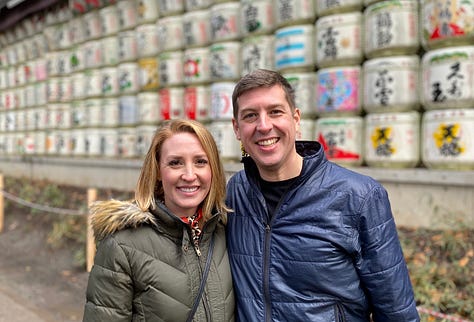
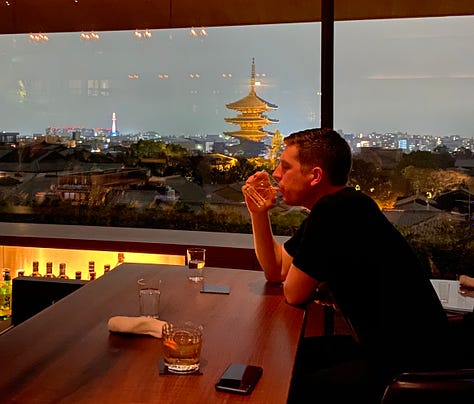
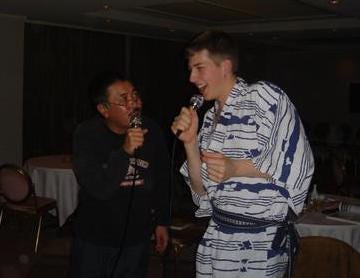
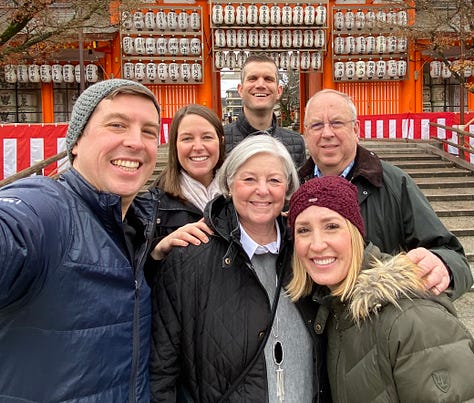
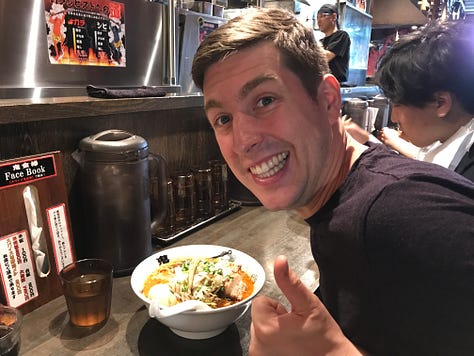

⌚ Best Time To Travel
There's no wrong answer; it depends on what you want to discover.
-
In the Spring, you’ll experience sakura, the stunning cherry blossoms. While you will experience the crowds, the beauty is worth the hype. And you don’t need to be in Tokyo or Kyoto to see them.
-
In the Fall, you’ll experience koyo, the beautiful autumn colors. The red Japanese maples are just as magnificent as the cherry blossoms. Since the country is 70% covered in forests, it’s a sight to see into November.
-
In the Winter, you’ll experience perfect conditions for skiing in Hokkaido, wintry landscapes, and stunning sunsets. While the winter is colder, the crowds are fewer, and prices are lower.
-
In the Summer, you’ll experience matsuri, the festivals, and the country's liveliness. It’s a great opportunity to wander the city via walking or transit. While its vibrancy is in full effect, it can get hot and humid.
🏨 Hospitality Culture & Norms
Hospitality is centered around omotenashi, an elevated sense of service. There is an unspoken social contract unique to Japan that you are a “deferential” guest. In other words, the idea that “the customer is always right” doesn’t really exist like it does in the US, and you are expected to be as well-behaved and as friendly to hospitality staff as they are to you.
Also, punctuality is a core value in Japanese culture. Trains run on a perfect schedule. Brandon actually shared his experience of being on a late train, and he received an official notice from the rail operators to give his boss an excuse for being late. Also, in 2017 and 2018, rail operators issued nationally broadcasted apologies for trains that unintentionally left 20 seconds too early. The point is punctuality is important, so try not to be late for any of your reservations (restaurants, guides, trains, etc.).
Meeting locals in Japan is a bit harder than I’ve experienced in other countries. It's difficult to strike up a spontaneous conversation. However, I have found more success meeting locals through more structured ways, like attending a free walking tour.
Luxury Travel Planners, Guides & Hotel Concierges
There are many restaurants and experiences you can’t do without access to a connected local. It’s not as simple as booking online to eat at some Michelin-starred restaurants or attend certain cultural events. But don’t let that steer you away. If you can’t find a travel planner or guide, you can leverage high-end hotel concierge services for hard-to-book places. Book a few nights in a high-end hotel to take advantage of the concierge services and move to a more affordable place later. We had great success getting some tough reservations with the help of the Hilton Tokyo concierge.
It’s also important to note that many hotels offer a more comprehensive range of services and experiences than before the pandemic. They’ve invested in compelling food and beverage options and attracting locals to eat in their restaurants. Some even have secret personalized experiences with local artisans (Aman in Tokyo). For example, you could cut a kimono or yukata robe, hand etch chopsticks, or learn fan design.
Planning for Meals
Japan is a very populous country, so plan what you will eat and where you will stay ahead of time. The best tool for finding dining experiences is Tabelog. Just note that Japanese culture takes its food rating system very seriously. A great experience might be rated “3” because that qualifies as a great score.
Pro tip (ratings): The average for excellent is between 3-4 in Japan, so when you see a place with a really inflated score, it’s probably more frequented by foreigners than locals.
Dining Expectations, Etiquette Tips & Social Shopping
It is surprisingly cheap to eat in many places. For people who love to eat and try new food, it’s the perfect country for you. I will say “most” places are surprisingly cheap because Tokyo is notably home to 200+ Michelin-starred restaurants (the most of any city in the world).
If you want to hack your daily food “allowance”, do two lunches. Do the first at 10:45 am, then another at 2:45 pm. You’ll get to try more places and, bonus, avoid some lines. But I will say this; you won’t be able to avoid lines forever. Waiting in line is just a part of the dining process, so it’s better to know this going into it.
If you eat with a larger group, expect to go in as pairs or trios. Many spaces are small, and dining is not always designed as a social experience. That said, there are less structured, informal venues perfect for socializing, like izakayas.
If you see a restaurant with multiple locations, don’t hesitate to try it (I’m talking of soba, gyoza, or ramen places, not McDonald’s). In America, having more than one location might be considered more corporate, but in Japan, having more than one location often means the food was good enough to expand. Since many restaurants are small, they might have added more locations just to serve more customers in different areas.
Note that Japan is a non-tipping culture and although your attempt might be well-intentioned, the act might be perceived as rude. So it’s best to get comfortable without leaving a tip.
Shopping in Japan (especially in Tokyo) is a social activity. Since people live in small spaces, it’s more accessible to hang out in public. Shopping can also be a super interesting experience for tourists. One reason is sizing. While I wear a L shirt in the US, I often found myself trying 2XL’s in Japan, and I never was able to find shoes or pants that fit.
Traveling With Kids
We’ve gone four times, but never with kids. We constantly walked around, tried new things, had cocktails, and ate four meals daily. Will we have another Japan trip like that with young kids? Probably not, but there are also family-friendly ways to experience the city, so I don’t want to discourage it. I’m excited to bring our girls to Japan to try new foods and enjoy many beautiful green spaces, open patios, and walking areas.
1️⃣ Tokyo
Tokyo is unlike any other city. It is enormous in every sense, yet more organized than any other city half its size. The best way to get around is by walking and public transit. Here are a few ways to get acquainted:
Explore Tokyo by Foot
Walk a triangle from Omotesando to Harajuku and then down to Shibuya. You can easily do this all on the same day and experience some great highlights of Tokyo.
-
In Omotesando, you’ll experience small boutique shops and luxury “rodeo drive” style shopping.
-
In Harajuku, you’ll experience a unique clash of styles (think hip-hop meets little bo-peep).
-
As you keep going, you’ll find the Meiji Shrine, which then turns into Shibuya Crossing, the busiest pedestrian crossing in the world.
-
Pro tip (from Amy): walk everywhere to burn enough calories for four meals daily.
Explore Tokyo by Train
-
Use the Yamanote Line. It’s a great option since the rail travels in a circle around the city. Also, if you try to take in the map of every single line, you’ll experience a sensory overload.
-
The Yamanote line is a perfect way to visualize Tokyo geographically because the city is structured like a clock:
-
1:00 - 2:00 are the older areas
-
3:00 is also a central hub of activity
-
6:00 - 9:00 are the newer neighborhoods (and Brandon’s favorites)
-
9:00 - 10:00 are the major stations
-
-
Pro tip: Use the Suica mobile wallet (instead of the physical card) and Google Maps to get around. Note that because there are two different subway companies in Tokyo the fastest route may require a transfer that makes it more expensive than another route.
Tokyo Restaurant & Drink Recommendations
-
Maisen is popular and famous for its tonkatsu (breaded pork cutlet).
-
Kagari Ramen offers chicken ramen you won’t find anywhere outside Japan.
-
Kikanbo is my favorite Japanese restaurant for spicy ramen.
-
Rokurinisha serves dipping-style ramen, which you should try at Tokyo Station.
-
Min Min possibly has the best gyoza in Japan, also at Tokyo Station.
-
Savoy Azabu Juban has the best pizza in the world (as a side note, you should try other types of food after your Japanese fix).
-
Tama blends Japanese and Taiwanese influences with parts of Okinawan culture.
-
Tatemichiya is a punk rock izakaya with such a fun vibe.
-
7-Eleven has some of the most amazing snacks. You might be surprised to hear this, but they have some of the most delicious pancakes in the world. Look for these and then heat them in the microwave and eat them there. Also, Brandon says the 7-Eleven egg salad sandwiches are so delicious that he can write poetry about them.
-
Deus ex Machina has outstanding coffee.
-
Bar Trench, Bar Tram, and Bar Benfiddich serve amazing cocktails (Japan takes cocktails to a whole new level).
-
Breakfast Club is a Japanese version of an American diner that combines breakfast with a bar-type atmosphere.
-
Bear Pond is a little hole in the wall that is massively popular for espresso (I’ve been told not to take photos).
The Best City View in Tokyo
Going to a high-end hotel is the best way to enjoy a city view in a relaxed atmosphere instead of in tourist-filled spots. The New Four Seasons at Otemachi has the best view of the Imperial Garden. Right behind it, you can see Mount Fuji on a very clear day (in the winter).
Tokyo Experiences Off The Beaten Track
If you want to do something different, you should explore some other Tokyo neighborhoods (Shimokitazawa, Kichijoji, Daikanyama, Nakameguro, and Jiyūgaoka), where you will find tiny traditional houses, tight spaces, boutique shops, and mom-and-pop shops.
Also, check out the immersive experiences from Team Labs – they’re filled with amazing immersive art with light, sounds, and textures. They are so incredible that we went to one and decided to do another one the next day.
2️⃣ Kyoto
Kyoto is the ancient capital with some of the oldest cultural relics, but it’s a place of learning at its core. It’s a college town with a thriving student culture worth visiting.
First time in Kyoto? Here are two simple things you should do:
Rent an electric bike. Since Kyoto is in the middle of the mountains, it is hilly, but there is less traffic, so things move slowly. Bicycle riders don’t need to worry about getting lost. You’ll be able to explore different neighborhoods and never be far from your hotel. Remember to ride on the left side of the road.
Wander. The back alleys in Kyoto are full of interesting things to discover. Some shops have been selling specific, handcrafted items for 300 or 400 years (like 11 types of scissors). You can still walk in and show interest in their work even if you don’t plan on buying anything. Be sure to thank them for their time and express interest in what they are doing because they take great pride in their work.
Pro tip: Any time you receive anything in Japan, hold it for a moment and accept it because it’s a sign of respect.
Restaurant & Drink Recommendations
-
Bar Rocking Chair will make you wonder if you should ever leave.
-
Yugen serves matcha, and it is one of the most beautiful shops I’ve been to.
-
Da Yuki specializes in Napoletana pizza with a chef trained in Italy who has brought everything back to master the art of pizza.
-
Ippodo Tea does tea tasting with a storied reputation in the country (think of wine-tasting for tea).
-
Monk is a restaurant that takes the sort of multi-course idea in Japanese cuisine and flips it to Italian style.
-
House of KI NO BI offers a fascinating gin-tasting experience utilizing local botanicals.
-
Yasai Hori is run and operated by the chef, only leaning into the local harvests of the area with simple ingredients that scream flavor.
-
The Bar at Park Hyatt Kyoto is excellent. It’s near Kiyomizu-Dera Temple. The hotel is extremely expensive, but Chase point transfer to Park Hyatt is probably one of the best deals in the world.
3️⃣ Other Destinations:
We stayed at Satoyama Jujo in Niigata, and while it’s not quite a Ryokan, Amy and I dream about going back all the time. It’s easily in our list of top 5 hotel experiences in the world. That’s not to say there aren’t 100 other similar hotels in Japan just as good, it’s just the only one we’ve experienced and would gladly go back. While the surrounding town is near a ski resort, we went in the off-season, and it was quiet and relaxing.
Kyushu is the motherland of onsen culture. Kyushu has two main onsen towns: Beppu and Yufuin. Whenever you see a photo of Beppu, it looks like steam is coming out of every vent in the town. It’s unique. And then there is Yufuin. It’s located in the mountains in a rural setting but is still a popular tourist destination. I’ve never been to Kyushu, but it’s top of my list because I love going to the Onsen (though make sure you read up on onsen etiquette and protocol, which involves washing your body before bathing fully naked).
Outside Hakone, there are some incredible places to stay, like Fuji Five Lakes, nestled right under the mountain in a natural and beautiful environment.
A UNESCO site, Nikko is an experience for the evening after all the crowds are gone. You can see the UNESCO sites, but Brandon recommends Lake Chuzenji as a breathtaking experience.
Kanazawa is an excellent alternative to Kyoto if you want to avoid crowds. It has one of the most beautiful gardens in Japan. The Japanese rank their gardens, and one of them is in Kanazawa.
Despite Osaka's reputation as a food city, the entire country is basically a food country. So you don't necessarily need to go there and go out of your way, but if you are there, the city is known for having fantastic okonomiyaki. We also had an amazing time at an amazing speakeasy-style bar called Bible Club.
💭 Final Thoughts
A trip to Japan is the perfect way to indulge in the joy of exploration and serendipity. That might be hard for people who want to tackle everything on the itinerary or have massive FOMO, but I promise you won’t regret just exploring.
I want to thank Brandon Presser again for this conversation and his depth of experience. Check out (🎧Ep 101) for more about Traveling to Japan. And please give him a follow on Instagram.
I also have a bonus blog post coming soon to help you travel hack Japan with points and miles. I’ll highlight the flights, hotels, and great deals on credit card sign-up bonuses, so you get the max out of your travel. If you can’t wait, you can listen to the episode on the topic here: (🎧 Ep 102) Travel Hacking Japan with Points & Miles.
The content on this page is accurate as of the posting date; however, some of our partner offers may have expired.
Editor’s Note: Opinions expressed here are the author's alone, not those of any bank, credit card issuer, hotel, airline, or other entity. This content has not been reviewed, approved or otherwise endorsed by any of the entities included within the post.




